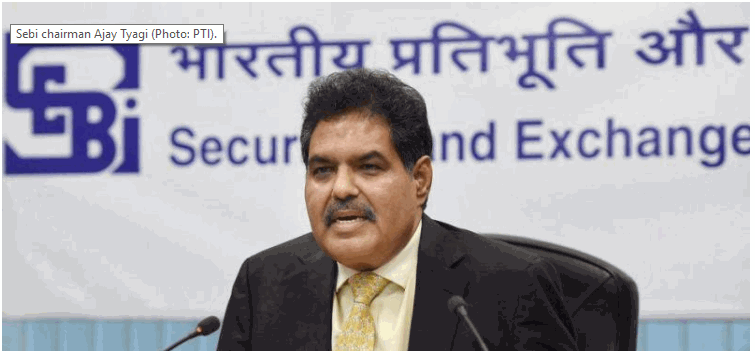In a surprising but disgusting news report, Mr Ajay Thyagi, the Chairman of SEBI has come up with a public statement that is intended or likely to move the price of Bitcoin in the Exchanges.
Contrary to the popular opinion, Mr Thyagi has stated
“Virtual Currencies have not posted any systemic risk to the economy”
“Government Panel is currently looking into the regulation”
Mr Thyagi was speaking at a CII summit when he made these statements. It must be remembered that Mr Thyagi represents SEBI which is the regulator who has so far failed to take any action against the Bitcoin exchanges which deal with the commodity called “bitcoin” without either the sanction from SEBI or from RBI.
By referring to Bitcoin and Virtual currencies as “Currencies”, Mr Thyagi has clearly represented them as “Currencies” which can legally be issued only by RBI. Any commodity touted as “Currency” though not recognized by RBI is just a “bit of paper” (In this case bit of electronic paper) and when value is placed on them, it is pure “Speculation”. The SEBI Chairman is fuelling such speculation and supporting Bitcoins through his irresponsible utterances. The statements can also be challenged as factual inaccuracies or clever manipulation of words that “At present Bitcoin is not a systemic risk” without saying that “In future it can be”.
For a regulator to refer to Bitcoin in a public meeting and to make a statement that Virtual Currencies have not posted any systemic risk to the economy is the height of deliberate misrepresentation to the public.
Bitcoin is an “Anonymously held value proposition” and is being used as a replacement of legit currency.
Can Mr Thyagi deny this?.. if he is put on a witness box in a Court?
If Bitcoin is a value proposition that can replace legit currency like Rupee, how can anybody differentiate it from “Black Money”?.
Mr Thyagi has by making such a statement said something to the effect “Black Money has not posed any systemic risk to the economy”.
Mr Modi and Mr Jaitely should take note of this.
This is absurd. If Mr Thyagi was not speaking from his regulatory position but as a representative of a Bitcoin start up, his words would have sounded more honest. He needs to immediately clarify his position and in case the media has not represented him properly, he should state so.
Further by stating that the Government Panel is looking into regulation, Mr Thyagi has made it clear that a final view of how to treat Bitcoin has not yet been taken by the Government. This is fuelling the speculation that Bitcoin can still be recognized and will move the Bitcoin price upwards. In the recent days, the move of income tax authorities to ask for information from traders of Bitcoins in India had shaken the market a little and the statement of Mr Thyagi is meant to bolster the market.
It now appears that SEBI is one of the stumbling blocks in preventing action by the Government against Bitcoin. It may be recalled that Naavi.org had pointed out earlier in May 2017 that MCX which works under SEBI was indulging in “Insider Tampering” of the decision of this Government panel (Please read : Is MCX of India involved in insider tampering of the Committee on Bitcoins?.. Directors, Please answer) by posting some supporting views on the MCX letterhead when the Government had called for public opinion on Bitcoin regulation last year. At that time we had demanded an explanation from the Board of Directors of MCX. Subsequently the recommendation was taken down but SEBI did not take any action.
It is now clear that the attempt of tampering of the Panel decision by posting an opinion of MCX in the public forum had the blessings from the highest officials of SEBI.
It is now not possible to trust SEBI with any credible regulation of Bitcoin Exchange as it has spoken against the RBI and openly supported the Bitcoin community.
SEBI Chairman’s statement is against known fact that Bitcoin and Virtual Currencies are the “Currencies of Criminals” and is “Black Money” in virtual form whose identity is hidden by encryption so that the holder of Bitcoin cannot be identified and that It can be moved across borders like data and cannot be identified when it moves in and out of the country in the form of data and enables Indians to convert their wealth either in Indian currency or in Foreign currency to Bitcoins or other virtual currencies.
In this context, Mr Thyagi should immediately
a) Declare his holding of Bitcoins even if he wants to say that he does not hold any Bitcoins himself.
b) Resign from his position as the regulator since he has ignored the fact that there are “Exchanges” working in the country, trading in the commodity called “Bitcoin” without license from SEBI and he has failed to take punitive action.
I request Government of India to take immediate action in this regard to ensure that Mr Thyagi is replaced as SEBI Chairman.
Naavi







